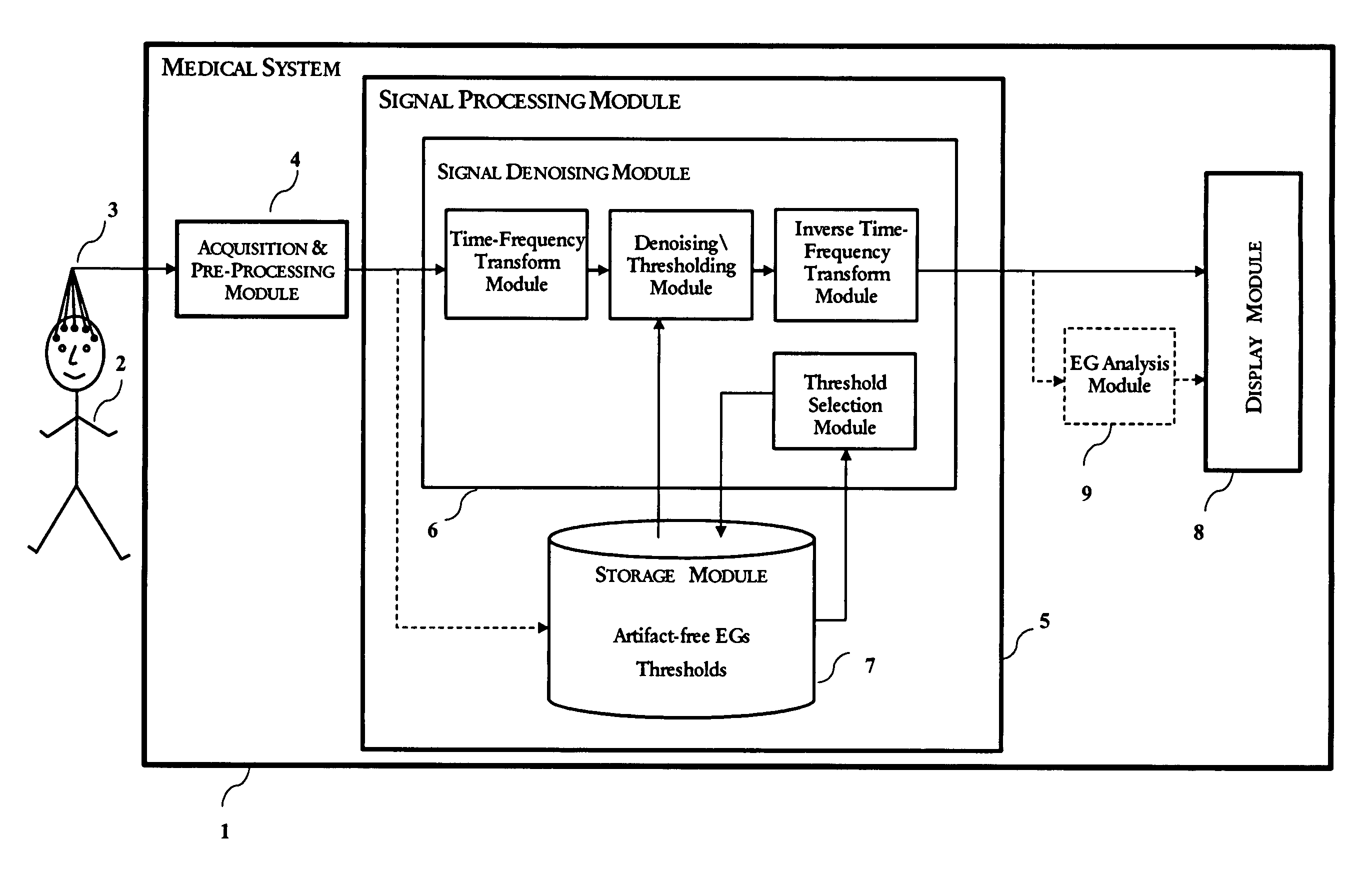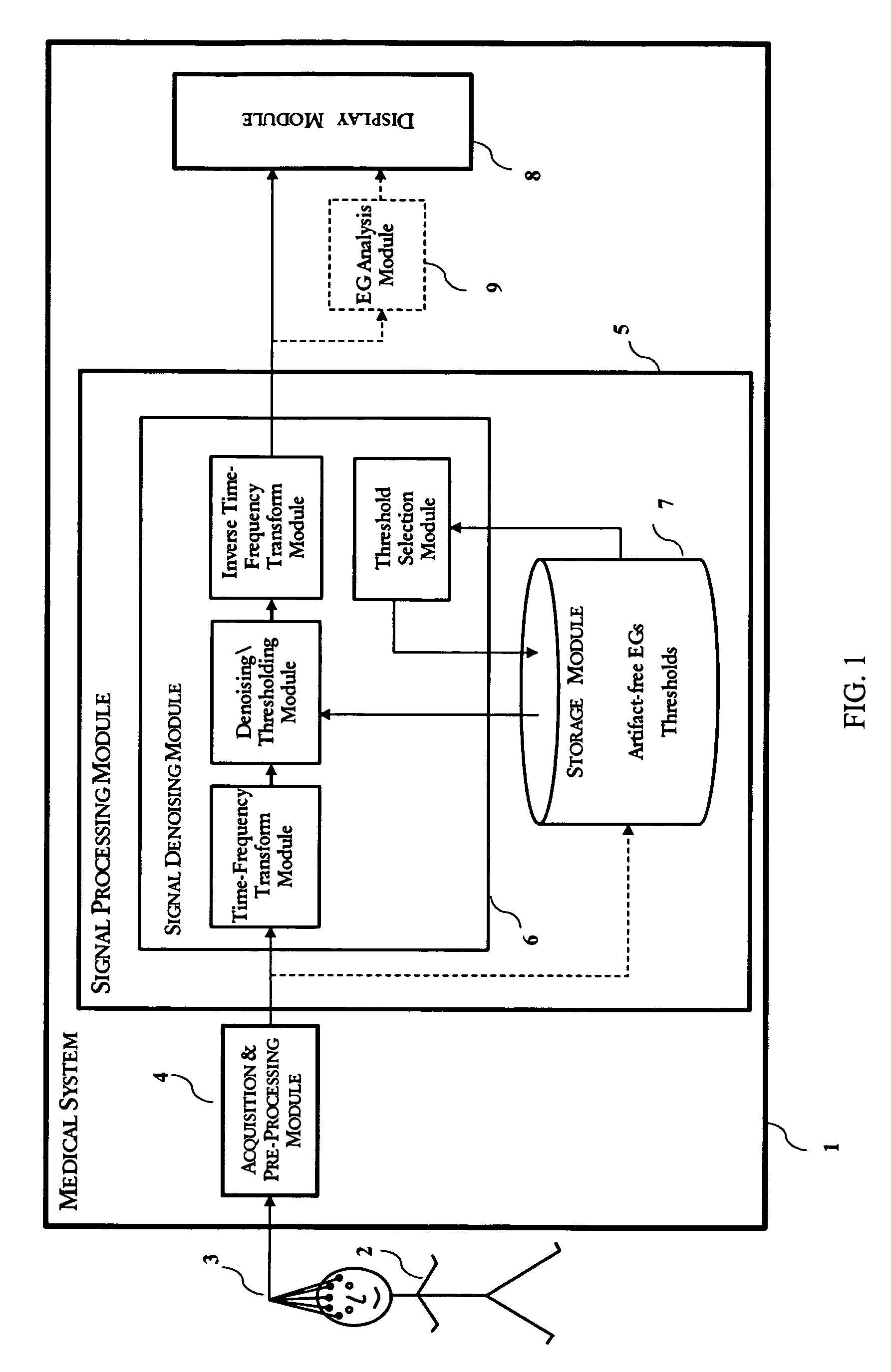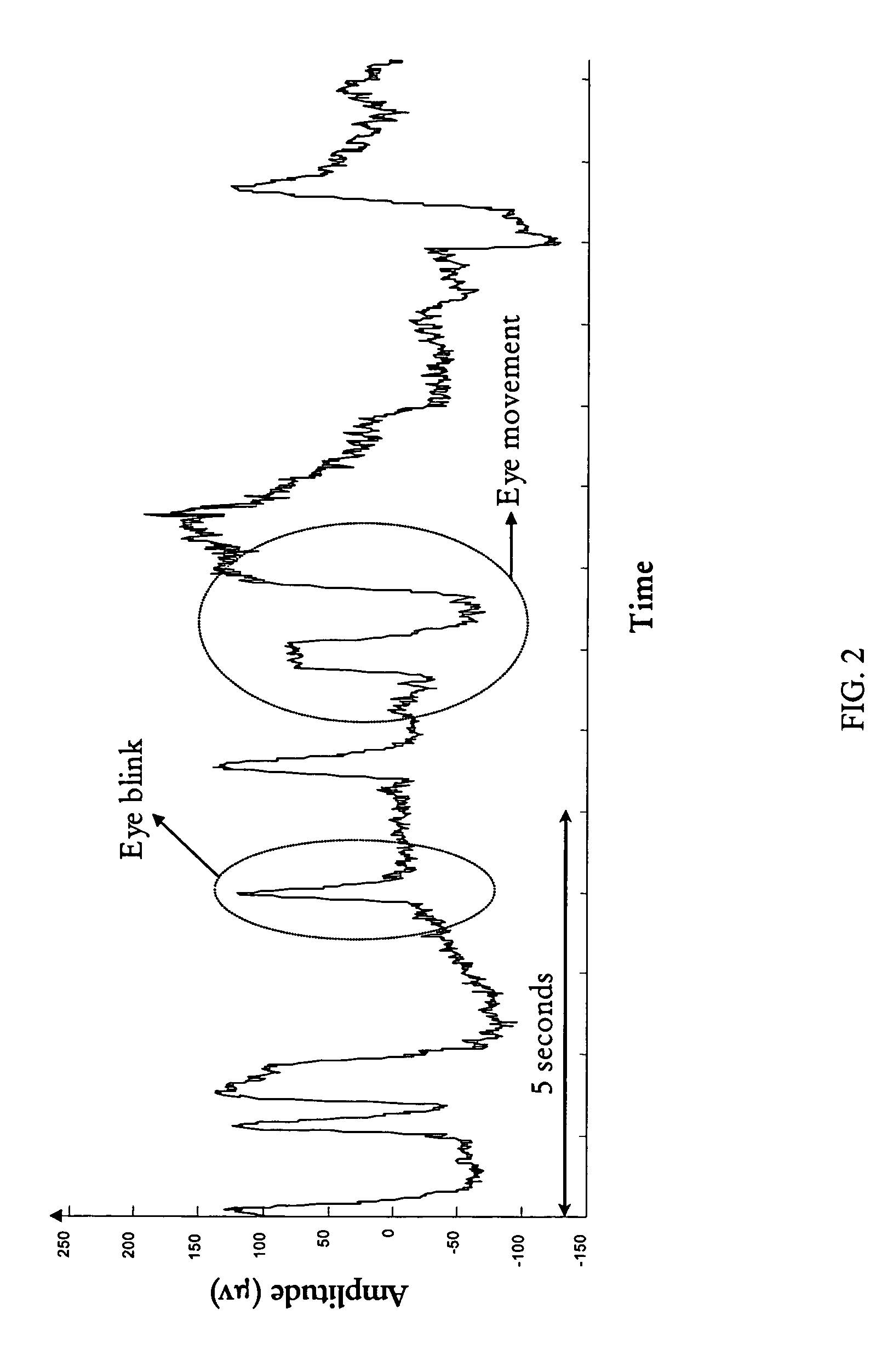Method and system for the denoising of large-amplitude artifacts in electrograms using time-frequency transforms
a technology of time-frequency transform and large-amplitude artifact, applied in the field of signal processing of electrogram, can solve the problems of large time-localized coefficient and other problems, and achieve the effects of low algorithmic complexity, convenient visual interpretation, and convenient real-time implementation
- Summary
- Abstract
- Description
- Claims
- Application Information
AI Technical Summary
Benefits of technology
Problems solved by technology
Method used
Image
Examples
Embodiment Construction
[0039]The present invention relates to a method of signal processing of electrograms for use in medical devices, preferably by time-frequency transforms. The present invention additionally relates to a system for receiving and analyzing such signals.
[0040]The denoising method of the present invention provides the means for removing contaminating artifacts from the observed EG. This technique is illustrated in one embodiment, for the removal of Ocular Artifacts (OAs) from the Electroencephalogram (EEG) in conscious subjects. However, the same technique can also be used to remove a variety of large-amplitude artifacts such as the heart artifacts, and / or muscle and movement artifacts, from a variety of EG signals.
[0041]The present invention relies on the time-frequency decomposition of the observed electrogram. For illustration purposes, consider another embodiment of a single-channel electroencephalogram. EEG signals are representative of the cortical activity of a subject and can be ...
PUM
 Login to View More
Login to View More Abstract
Description
Claims
Application Information
 Login to View More
Login to View More - R&D
- Intellectual Property
- Life Sciences
- Materials
- Tech Scout
- Unparalleled Data Quality
- Higher Quality Content
- 60% Fewer Hallucinations
Browse by: Latest US Patents, China's latest patents, Technical Efficacy Thesaurus, Application Domain, Technology Topic, Popular Technical Reports.
© 2025 PatSnap. All rights reserved.Legal|Privacy policy|Modern Slavery Act Transparency Statement|Sitemap|About US| Contact US: help@patsnap.com



